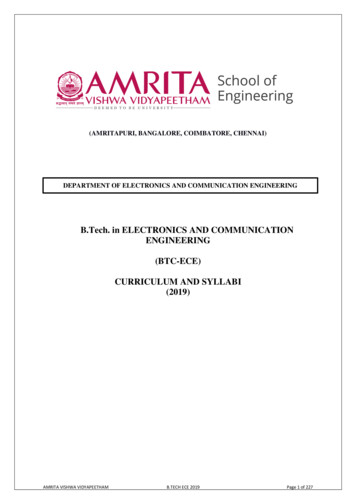
Transcription
(AMRITAPURI, BANGALORE, COIMBATORE, CHENNAI)DEPARTMENT OF ELECTRONICS AND COMMUNICATION ENGINEERINGB.Tech. in ELECTRONICS AND COMMUNICATIONENGINEERING(BTC-ECE)CURRICULUM AND SYLLABI(2019)AMRITA VISHWA VIDYAPEETHAMB.TECH ECE 2019Page 1 of 227
GENERAL INFORMATIONABBREVIATIONS USED IN THE orialPracticalCreditsEngineering Sciences (including General, Core and Electives)Humanities (including Languages and others)Basic Sciences (including Mathematics)Project Work (including MMATMEEPHY-Aerospace EngineeringComputer Science and Engineering - Artificial IntelligenceBiologyComputer and Communication EngineeringChemical EngineeringChemistryComputer Science and EngineeringCivil EngineeringCultural EducationElectronics and Computer EngineeringElectronics and Communication EngineeringElectrical and Electronics EngineeringElectrical and Computer EngineeringHumanitiesMathematicsMechanical EngineeringPhysicsCourse Outcome (CO) – Statements that describe what students are expected to know, and are able to do at theend of each course. These relate to the skills, knowledge and behaviour that students acquire in their progressthrough the course.Program Outcomes (POs) – Program Outcomes are statements that describe what students are expected to knowand be able to do upon graduating from the Program. These relate to the skills, knowledge, attitude and behaviourthat students acquire through the program. NBA has defined the Program Outcomes for each discipline.PROGRAM OUTCOMES FOR ENGINEERING1.2.3.4.5.Engineering knowledge: Apply the knowledge of mathematics, science, engineering fundamentals, and anengineering specialization to the solution of complex engineering problems.Problem analysis: Identify, formulate, review research literature, and analyze complex engineering problemsreaching substantiated conclusions using first principles of mathematics, natural sciences, and engineeringsciences.Design/development of solutions: Design solutions for complex engineering problems and design systemcomponents or processes that meet the specified needs with appropriate consideration for the public healthand safety, and the cultural, societal, and environmental considerations.Conduct investigations of complex problems: Use research-based knowledge and research methodsincluding design of experiments, analysis and interpretation of data, and synthesis of the information toprovide valid conclusions.Modern tool usage: Create, select, and apply appropriate techniques, resources, and modern engineering andIT tools including prediction and modeling to complex engineering activities with an understanding of thelimitations.AMRITA VISHWA VIDYAPEETHAMBTECH ECE 2019Page 2 of 227
6.The engineer and society: Apply reasoning informed by the contextual knowledge to assess societal, health,safety, legal and cultural issues and the consequent responsibilities relevant to the professional engineeringpractice.7. Environment and sustainability: Understand the impact of the professional engineering solutions in societaland environmental contexts, and demonstrate the knowledge of, and need for sustainable development.8. Ethics: Apply ethical principles and commit to professional ethics and responsibilities and norms of theengineering practice.9. Individual and team work: Function effectively as an individual, and as a member or leader in diverseteams, and in multidisciplinary settings.10. Communication: Communicate effectively on complex engineering activities with the engineeringcommunity and with society at large, such as, being able to comprehend and write effective reports and designdocumentation, make effective presentations, and give and receive clear instructions.11. Project management and finance: Demonstrate knowledge and understanding of the engineering andmanagement principles and apply these to one’s own work, as a member and leader in a team, to manageprojects and in multidisciplinary environments.12. Life-long learning: Recognize the need for, and have the preparation and ability to engage in independentand life-long learning in the broadest context of technological change.Program educational objectives are the envisioned career/professional/personal growththat the graduates should achieve in a short span of time (3-5 years) after graduatingfrom the course. PEO1: To develop an ability to integrate fundamental knowledge of basic science,mathematics and engineering to work on complex problems in the field of Electronics andCommunication Engineering.PEO2: To promote an independent research mindset and inculcate a thirst for continuouslearning by providing hands-on experience with simulation and modelling tools for electronics,signal processing and communication-based applications.PEO3: To provide a platform to explore and pursue their interests in diversified fields for asuccessful career in both public and private sectors specializing in electronics andcommunication.PEO4: To nurture team spirit and leadership qualities together with a sense of socialresponsibility by outreach programs and produce electronics and communication engineerswith an ability to integrate engineering and society.Program Specific Objectives (PSOs)PSO1: Able to design, develop and analyze systems in signal processing, electronics,communication and computing.PSO2: Able to demonstrate competency in research and innovations.AMRITA VISHWA VIDYAPEETHAMBTECH ECE 2019Page 3 of 227
SEMESTER ICat.CodeTitleCreditSCI19BIO101Biology for Engineers -A3SCI19MAT101Single Variable Calculus1SCI19MAT102Matrix Algebra2ENGG19CSE100Problem Solving and AlgorithmicThinking4SCI19PHY103Physics of Electronic Materials3ENGG19MEE100Engineering Graphics - CAD3ENGG19EEE1003ENGG19EEE181ENGG19ECE101Basic Electrical and ElectronicsEngineeringBasic Electrical and ElectronicsEngineering LabIntroduction to Internet of ThingsHUM19CUL101Cultural Education - I2TOTAL2311SEMESTER T112Technical CommunicationMultivariable CalculusLinear Algebra323SCI19CHY102Engineering Chemistry - B3SCI19CHY182Engineering Chemistry Lab - B1ENGGENGG19CSE10219ECE112Computer ProgrammingElectronic Devices and 9CUL111Electronic Systems LabManufacturing PracticeCircuit TheoryCultural Education - IITOTAL113226AMRITA VISHWA VIDYAPEETHAMBTECH ECE 2019Page 4 of 227
SEMESTER IIICat.CodeTitleCreditENGG19ECE201Analog Electronic Circuits3ENGG19ECE202Applied Electromagnetics4ENGG19ECE204Digital Electronics and Systems4ENGG19ECE203Signals and Systems4SCI19MAT205Probability and Random Processes4ENGG19ECE282Digital Electronics and Systems Lab1ENGG19ECE281Analog Electronics Lab1HUM19AVP201Amrita Values Program I1HUM19ENV300Environmental ScienceP/FTOTAL22SEMESTER IVCat.CodeTitleCreditENGG19ECE213Transmission Lines andRadiating Systems4ENGG19ECE211Digital Signal Processing3ENGG19ECE212Linear Integrated Circuits3ENGG19ECE214Communication Theory4SCI19MAT213Optimization Techniques3ENGG19ECE284Digital Signal Processing Lab1HUM19AVP211Amrita Values Program II1ENGG19ECE283Linear Integrated Circuits Lab1HUM19SSK211Soft Skills I2HUM19LAW300Indian ConstitutionP/FTOTAL22AMRITA VISHWA VIDYAPEETHAMBTECH ECE 2019Page 5 of 227
SEMESTER VCat.CodeTitleCreditENGG19ECE304Microcontrollers and Interfacing4ENGG19ECE303Radio Frequency Engineering3ENGG19ECE302Digital Communication3ENGG19ECE301Control Theory4Professional Elective I*3ENGGENGG19ECE381RF and Simulation lab1ENGG19ECE382Communication Systems lab1HUM19SSK301Soft Skills II2ENGG19LIV390Live-in –Labs***[3]TOTAL21 [3]SEMESTER VICat.CodeTitleCreditENGG19ECE313VLSI Design3ENGG19ECE311Computer Networks4ENGG19ECE312Information Theory and Coding3ENGGProfessional Elective II*3ENGGProfessional Elective III*3ENGG19ECE383VLSI Design Lab1HUM19SSK311Soft Skills III2ENGG19ECE391Seminar1ENGG19ECE384Open Lab1HUM19MNG300Disaster ManagementP/FENGG19LIV490Live-in –Labs***[3]TOTAL21 [3]AMRITA VISHWA VIDYAPEETHAMBTECH ECE 2019Page 6 of 227
SEMESTER VIICat.TitleCreditENGGProfessional Elective IV*3ENGGProfessional Elective V*3ENGGProfessional Elective VI*3HUMFree Elective**2HUMFree Elective**2Project Phase I2TOTAL15PRJCode19ECE495SEMESTER VIIICat.CodeENGGPRJ19ECE499TitleCreditProfessional Elective VII*3Project Phase IITOTAL1013TOTAL CREDITS163*Professional Elective - Electives categorised under Engineering, Science ,Mathematics,Live-in-Labs, and NPTEL Courses . Student can opt for such electives acrossdepartments/campuses. Students with CGPA of 7.0 and above can opt for a maximum of 2NPTEL courses with the credits not exceeding 8.** Free Electives - This will include courses offered by Faculty of Humanities and SocialSciences/ Faculty Arts, Commerce and Media / Faculty of Management/Amrita Darshanam (International Centre for Spiritual Studies).*** Live-in-Labs - Students undertaking and registering for a Live-in-Labs project, can beexempted from registering for an Elective course in the higher semester.AMRITA VISHWA VIDYAPEETHAMBTECH ECE 2019Page 7 of 227
PROFESSIONAL ELECTIVECat.CodeTitleCreditAnalog and Mixed Signal SystemsENGG19ECE331Biomedical Instrumentation3ENGG19ECE332Mixed Signal Design3ENGG19ECE333Micro Electro Mechanical Systems3ENGG19ECE334Analog IC Design3ENGG19ECE335Applications of Linear IntegratedCircuits3ENGG19ECE336Nano Electronics3ENGG19ECE337VLSI Fabrication Technology3ENGG19ECE338Solid State Devices3ENGG19ECE339Optical Engineering3Digital System design and architecturesENGG19ECE341VLSI System Design3ENGG19ECE342Hardware Security and Trust3ENGG19ECE343FPGA Based System Design3ENGG19ECE344Embedded Systems3ENGG19ECE345Computer Systems Architecture3ENGG19ECE346Digital IC Design3ENGG19ECE347Electronic System Level Design andVerification3ENGG19ECE348VLSI Testing and Testability3ENGG19ECE349RISC Processor Design using HDL3ENGG19ECE350VLSI Signal Processing3Computational EngineeringENGG19ECE351Markov Process and Queuing Theory3ENGG19ECE352Operations Research3ENGG19ECE353Convex Optimization3AMRITA VISHWA VIDYAPEETHAMBTECH ECE 2019Page 8 of 227
ENGG19ECE354Deep Learning3ENGG19ECE355Bio Inspired Algorithms3ENGG19ECE356Game Theory3ENGG19ECE357Pattern Recognition3ENGG19ECE358Signal Processing for BusinessApplications3ENGG19ECE359Non-linear Dynamics and Chaos3ENGG19ECE360Agent Based Modeling3ENGG19ECE361Data Structures and Algorithms3ENGG19ECE362Software Engineering3ENGG19ECE363Machine Learning3Wireless Communications and NetworksENGG19ECE431Wireless Communication3ENGG19ECE432Software Defined Networks3ENGG19ECE433Orthogonal Frequency DivisionMultiplexing3ENGG19ECE434MIMO and Multicarrier Systems3ENGG19ECE435Spread Spectrum Communication3ENGG19ECE436Wireless Sensor Networks3ENGG19ECE437Mobile Communication3ENGG19ECE438Vehicular Communication3ENGG19ECE439Millimeter Wave PersonalCommunication Systems3ENGG19ECE440Telecommunication Management3RF System designENGG19ECE441Avionics3ENGG19ECE442Antenna Systems3ENGG19ECE443Planar Microwave Devices3ENGG19ECE444Satellite Communication3Signal ProcessingAMRITA VISHWA VIDYAPEETHAMBTECH ECE 2019Page 9 of 227
ENGG19ECE451Spoken Language Processing3ENGG19ECE452Radar Signal Processing3ENGG19ECE453Statistical Signal Processing3ENGG19ECE454Image Processing3ENGG19ECE455Biomedical Signal Processing3ENGG19ECE456Hyperspectral Image Analysis3ENGG19ECE457Wavelets and Application3ENGG19ECE458Adaptive Signal Processing3Instrumentation and ControlENGG19ECE461Intelligent Control Systems3ENGG19ECE462Process Control3ENGG19ECE463Smart Sensors3ENGG19ECE464Virtual Instrumentation for Communication Systems3ENGG19ECE465Electric Drives3ENGG19ECE466Industrial Instrumentation3AMRITA VISHWA VIDYAPEETHAMBTECH ECE 2019Page 10 of 227
PROFESSIONAL ELECTIVES UNDER SCIENCE tational Chemistry and Molecular Modelling3SCI19CHY236Electrochemical Energy Systems and Processes3SCI19CHY240Fuels and Combustion3SCI19CHY232Green Chemistry and Technology3SCI19CHY239Instrumental Methods of Analysis3SCI19CHY241Batteries and Fuel Cells3SCI19CHY242Corrosion Science3PHYSICSSCI19PHY340Advanced Classical Dynamics3SCI19PHY342Electrical Engineering Materials3SCI19PHY331Physics of Lasers and Applications3SCI19PHY341Concepts of Nanophysics and Nanotechnology3SCI19PHY343Physics of Semiconductor T341Statistical Inference3SCI19MAT342Introduction to Game Theory3SCI19MAT343Numerical Methods and Optimization3AMRITA VISHWA VIDYAPEETHAMBTECH ECE 2019Page 11 of 227
FREE ELECTIVESFREE ELECTIVES OFFERED UNDER MANAGEMENT STREAMCat.CodeTitleCreditHUM19MNG331Financial Management3HUM19MNG332Supply Chain Management3HUM19MNG333Marketing Management3HUM19MNG334Project Management3HUM19MNG335Enterprise Management3HUM19MNG338Operations Research3HUM19MEE401Industrial Engineering3HUM19MEE346Managerial Statistics3HUM19MEE347Total Quality Management3HUM19MEE342Lean Manufacturing3HUM19CSE358Software Project Management3HUM19CSE359Financial Engineering3HUM19CSE360Engineering Economic Analysis3HUM19MNG331Financial Management3HUM19CSE362Information Systems3AMRITA VISHWA VIDYAPEETHAMBTECH ECE 2019Page 12 of 227
FREE ELECTIVES OFFERED UNDER HUMANITIES / SOCIAL SCIENCE STREAMSCat.CodeTitleCreditHUM19CUL230Achieving Excellence in Life - An Indian Perspective2HUM19CUL231Excellence in Daily Life2HUM19CUL232Exploring Science and Technology in Ancient India2HUM19CUL233Yoga Psychology2HUM19ENG230Business Communication2HUM19ENG231Indian Thought through English2HUM19ENG232Insights into Life through English Literature2HUM19ENG233Technical Communication2HUM19ENG234Indian Short Stories in English2HUM19FRE230Proficiency in French Language (Lower)2HUM19FRE231Proficiency in French Language (Higher)2HUM19GER230German for Beginners I2HUM19GER231German for Beginners II2HUM19GER232Proficiency in German Language (Lower)2HUM19GER233Proficiency in German Language (Higher)2HUM19HIN101Hindi I2HUM19HIN111Hindi II2HUM19HUM230Emotional Intelligence2HUM19HUM231Glimpses into the Indian Mind - the Growth of ModernIndia2HUM19HUM232Glimpses of Eternal India2HUM19HUM233Glimpses of Indian Economy and Polity2AMRITA VISHWA VIDYAPEETHAMBTECH ECE 2019Page 13 of 227
HUM19HUM234Health and Lifestyle2HUM19HUM235Indian Classics for the Twenty-first Century2HUM19HUM236Introduction to India Studies2HUM19HUM237Introduction to Sanskrit Language and Literature2HUM19HUM238National Service Scheme2HUM19HUM239Psychology for Effective Living2HUM19HUM240Psychology for Engineers2HUM19HUM241Science and Society - An Indian Perspective2HUM19HUM242The Message of Bhagwad Gita2HUM19HUM243The Message of the Upanishads2HUM19HUM244Understanding Science of Food and Nutrition2HUM19JAP230Proficiency in Japanese Language (Lower)2HUM19JAP2313Proficiency in Japanese Language (Higher)2HUM19KAN101Kannada I2HUM19KAN111Kannada II2HUM19MAL101Malayalam I2HUM19MAL111Malayalam II2HUM19SAN101Sanskrit I2HUM19SAN111Sanskrit II2HUM19SWK230Corporate Social Responsibility2HUM19SWK231Workplace Mental Health2HUM19TAM101Tamil I2HUM19TAM111Tamil II2AMRITA VISHWA VIDYAPEETHAMBTECH ECE 2019Page 14 of 227
SYLLABUSSEMESTER I19BIO101BIOLOGY FOR ENGINEERS - AL-T-P-C: 3-0-0-3Course Objectives To understand Biological concepts from an engineering perspectiveTo understand the inter-connection between biology and future technologiesTo motivate technology application for biological and life science challengesCourse OutcomesCO1: Understand the biological concepts from an engineering perspectiveCO2: Understand the concepts of biological sensing and its challengesCO3: Understand development of artificial systems mimicking human actionCO4: Integrate biological principles for developing next generation technologiesCO-PO MappingPO/PSOCOPO1 PO2 PO3 PO4 PO5 PO6 PO7 PO8 PO9 PO10 PO11 3---------222CO433---------222SyllabusUnit 1Need to study Biology: – Life Science Studies Significance - Bio Inspired Inventions - Role of Biology in NextGeneration Technology Development – Cell Structure – Cell Potential - Action Potential – ECG and othercommon signals – Sodium Potassium channels – Neuron function – Central Nervous Systems – Discussion Topics- Evolution of Artificial Neural Networks - Machine Learning techniques.Unit 2Sensing Techniques - Understanding of Sense organs working – Sensing mechanisms - Sensor Developmentissues – Discussion Topics: Digital Camera – Eye Comparison - electronic nose - electronic tongue - electronicskin.Unit 3Physiological Assist Device - Artificial Organ Development: Kidney - Liver – Pancreas - heart valves – DesignChallenges and Technological Developments.Text Book(s)Leslie Cromwell, “Biomedical Instrumentation”, Prentice Hall 2011.AMRITA VISHWA VIDYAPEETHAMBTECH ECE 2019Page 15 of 227
Thyagarajan S., Selvamurugan N., Rajesh M.P., Nazeer R.A., Thilagaraj R. W., Barathi S., and Jaganthan M.K.,“Biology for Engineers”, Tata McGraw-Hill, New Delhi, ological-sciences/electronic-tongue.Evaluation PatternAssessmentInternalPeriodical 1 (P1)Periodical 2 (P2)*Continuous Assessment (CA)151520End SemesterExternal50*CA – Can be Quizzes, Assignment, Projects, and ReportAMRITA VISHWA VIDYAPEETHAMBTECH ECE 2019Page 16 of 227
19MAT101SINGLE VARIABLE CALCULUSL-T-P-C: 1-0-0-1Course Objectives Understand the various functions and their graphs.Understand the basic concept of continuous function and find the extreme values of the continuousCOURSE TITLEL-T-P-C: 3-0-0-3functions.Understand the definite integral and various integration techniques.Course OutcomesCO1: To understand the concepts of single variable calculus.CO2: To sketch graphs for functions using the concepts of single variable calculus and apply thefundamental theorem of calculus to evaluate integrals.CO-PO MappingPO/PSOPO1 PO2 PO3 PO4 PO5 PO6 PO7 PO8 PO9 PO10 PO11 O212------2---------------------SyllabusUnit 1CalculusGraphs: Functions and their Graphs. Shifting and Scaling of Graphs. (1.5)Unit 2Limit and Continuity: Limit (One Sided and Two Sided) of Functions. Continuous Functions, Discontinuities,Monotonic Functions, Infinite Limits and Limit at Infinity. (2.1, 2.6)Unit 3Graphing : Extreme Values of Functions, Concavity and Curve Sketching, (4.1, 4.4).Unit 4Integration: Definite Integrals, The Mean Value Theorem for definite integrals, Fundamental Theorem ofCalculus, Integration Techniques. (5.2 - 5.3, 8.1 – 8.5)Text BookCalculus’, G.B. Thomas Pearson Education, 2009, Eleventh Edition.Reference‘Calculus’, Monty J. Strauss, Gerald J. Bradley and Karl J. Smith, 3rd Edition, 2002Evaluation patternAt the end of the course, a two-hour test will be conducted for 50 marks. The marks will be converted to 100 forgrading.AMRITA VISHWA VIDYAPEETHAMBTECH ECE 2019Page 17 of 227
19MAT102MATRIX ALGEBRAL -T-P-C: 2-0-0-2Course Objectives Understand basic concepts of eigen values and eigen vectors. Apply eigen values and eigen vectors for diagonalization and quadratic form. Apply various iterative techniques to solve the system of equations.COURSE TITLECourse OutcomesL-T-P-C: 3-0-0-3CO1: Understand the notion of eigenvalues and eigenvectors, analyse the possibility of diagonalization andhence compute a diagonal matrix, if possible.CO2: Apply the knowledge of diagonalization to transform the given quadratic form into the principal axesform and analyse the given conic section.CO3: Understand the advantages of the iterative techniques and apply it to solve the system of equations andfinding eigenvectors.CO-PO PO8PO9PO10PO11PO12CO1SyllabusUnit 1Review: System of linear Equations, linear independence.Unit 2Eigen values and Eigen vectors: Definitions and properties. Positive definite, negative definite and indefiniteUnit 3Diagonalization and Orthogonal Diagonalization. Properties of Matrices. Symmetric and Skew SymmetricMatrices, Hermitian and Skew Hermitian Matrices and Orthogonal matrices.Unit 4Numerical Computations: L U factorization, Gauss Seidal and Gauss Jacobi methods for solving system ofequations. Power Method for Eigen Values and Eigen Vectors.Text BookAdvanced Engineering Mathematics, E Kreyszig, John Wiley and Sons, Tenth Edition, 2018.Reference BooksAdvanced Engineering Mathematics by Dennis G. Zill and Michael R.Cullen, second edition, CBS Publishers,2012.Engineering Mathematics’, Srimanta Pal and Subhodh C Bhunia, John Wiley and Sons, 2012, Ninth Edition.Evaluation PatternAssessmentClass Test/Assignment/TutorialEnd of course Test (2hrs)AMRITA VISHWA VIDYAPEETHAMWeightage3070BTECH ECE 2019Page 18 of 227
19CSE100PROBLEM SOLVING AND ALGORITHMIC THINKINGL -T-P-C: 2-1-3-4Course Objectives This course provides the foundations of computational problem solving.The course focuses on principles and methods thereby providing transferable skills to any otherdomain.COURSETITLEL-T-P-C:3-0-0-3The course also providesfoundationfor developing computational perspectivesof one’sowndiscipline.Course OutcomesCO1: Apply algorithmic thinking to understand, define and solve problemsCO2: Design and implement algorithm(s) for a given problemCO3: Apply the basic programming constructs for problem solvingCO4: Understand an algorithm by tracing its computational states, identifying bugs and correcting themCO-PO t 1Problem Solving and Algorithmic Thinking Overview – problem definition, logical reasoning; Algorithm –definition, practical examples, properties, representation, algorithms vs programs.Unit 2Algorithmic thinking – Constituents of algorithms – Sequence, Selection and Repetition, input-output;Computation – expressions, logic; algorithms vs programs, Problem Understanding and Analysis – problemdefinition, input-output, variables, name binding, data organization: lists, arrays etc. algorithms to programs.Unit 3Problem solving with algorithms – Searching and Sorting, Evaluating algorithms, modularization, recursion. Cfor problem solving – Introduction, structure of C programs, data types, data input, output statements, controlstructures.Text Book(s)Riley DD, Hunt KA. Computational Thinking for the Modern Problem Solver. CRC press; 2014 Mar 27.Reference(s)Ferragina P, Luccio F. Computational Thinking: First Algorithms, Then Code. Springer; 2018.Beecher K. Computational Thinking: A beginner's guide to Problem-solving and Programming. BCS Learning &Development Limited; 2017.AMRITA VISHWA VIDYAPEETHAMBTECH ECE 2019Page 19 of 227
Curzon P, McOwan PW. The Power of Computational Thinking: Games, Magic and Puzzles to help you becomea computational thinker. World Scientific Publishing Company; 2017.Evaluation PatternAssessmentInternalEndSemesterPeriodical 110Periodical 210*Continuous Assessment (Theory) 15(CAT)Continuous Assessment (Lab)30(CAL)End Semester35*CA – Can be Quizzes, Assignment, Projects, and Reports.AMRITA VISHWA VIDYAPEETHAMBTECH ECE 2019Page 20 of 227
19PHY103PHYSICS OF ELECTRONIC MATERIALSL-T-P-C: 3-0-0-3Course Objectives To introduce the structure and physics of materials used in electronicsTo introduce the properties that characterize a material as a conductor, semiconductor or dielectricTo analyze the electrical, magnetic and optical behavior of materialsCOURSE TITLEL-T-P-C: 3-0-0-3Course OutcomesCO1: Ability to understand the structure and physics of materials used in electronics.CO2: Ability to understand the different parameters and terminology used in describingelectronic properties of materials.CO3: Ability to understand different properties of materials that result in specific electrical,optical and magnetic behavior.CO4: Ability to understand and analyze the behavior of active and passive devices built fromelectronic materials.CO-PO ------2Keywords: Electronic Properties of Materials, Semiconductor Physics, Electronic and Optoelectronic DevicesContents:Module I: Crystal Structure of SolidsCrystal directions and planes, crystal properties, defects and vacancies, two phase solids.Module II: Elementary Quantum Physics, ConductorsWave particle duality, uncertainty principle, potential well, tunnelling, potential box. Simulated emission andlasers. Conductors: Drude model, temperature dependence of resistivity, skin effect, AC conductivity, metal films,thin metal films, interconnects in microelectronics, electromigration.Module III: Semiconductors, DielectricsClassification of semiconductors, doping, temperature dependence, minority carriers and recombination, diffusionand conduction equations, continuity equation, optical absorption, piezoresistivity. Dielectric materials:Polarization, polarization mechanisms, dielectric breakdown in solids, capacitors and their construction,piezoelectricity, ohmic and non ohmic contacts.Module IV: Magnetic Properties of Materials, SuperconductorsDipole moment, permeability, classification of magnetic materials, saturation and Curie temperature,superconductivity.Module V: Optical PropertiesLight propagation in a homogeneous medium, absorption, scattering, luminescence, phosphors, LEDs,polarization, LCDs, electro optic effects.AMRITA VISHWA VIDYAPEETHAMBTECH ECE 2019Page 21 of 227
Text Books/ReferencesS O Kasap, “Principles of Electronic Materials and Devices”, 4thEdition, McGraw Hill Education, 2018.LSolymar, D Walsh and R R A Syms, “Electrical Properties of Materials”, 9thEdition, Oxford University Press,2014.Rolf. E Hummel, “Electronic Properties of Materials”, 4thEdition, Springer, 2012.Eugene A Irene, Electronic Material Science, Wiley-Blackwell, 2005.Evaluation Pattern 50:50AssessmentInternalPeriodical 1 (PI)15Periodical 2 (P2)15*Continuous Assessment (CA)20End Semester*CA – Can be Quizzes, Assignment, Projects, and Reports.AMRITA VISHWA VIDYAPEETHAMBTECH ECE 2019External50Page 22 of 227
ENGINEERING GRAPHICS – CAD19MEE100L-T-P-C: 2-0-3-3Course Objectives Familiarize with Bureau of Indian Standards (BIS) for creating engineering drawingsTrain the students on proper dimensioning and construction of simple geometriesInculcate with the concept of developing orthographic projections and isometric views using CADdrafting packageNote:1.2.Drawing practice to be carried out using drafting package (Auto-CAD)First angle projection to be followedCourse OutcomesCO1: Understand the engineering drawing standards and their usageCO2: Interpret engineering drawingsCO3: Construct and dimension 2-D geometries using CAD softwareCO4: Improve coherent visualization skillsCO5: Inculcate with the concept of developing orthographic projections and isometric viewsCO-PO MappingPO/PSOCOPO1 PO2 PO3 PO4 PO5 PO6 PO7 PO8 PO9 PO10 PO11 yllabusUnit 1Basic principles of engineering drawing, Standards and conventions, lettering and types of lines, Introduction todrafting software, standard tool bar/menus, navigational tools. Co-ordinate system and reference planes. Creationof 2 dimensional drawing environment. Selection of drawing size and scale. Sketching of 2D simple geomentries,editing and dimensioning of 2D geomentries.Unit 2Orthographic Projections: Introduction, planes of projection, projection of points in all the four quadrants.Projection of straight lines, Projection of Plane Surfaces, Projection of regular solids, Sectioning of solidsUnit 3Plan and elevation of simple buildings with dimensionsAMRITA VISHWA VIDYAPEETHAMBTECH ECE 2019Page 23 of 227
Text BookBasantAgarwal and C M Agarwal., “Engineering Drawing”, 2e, McGraw Hill Education, 2015Reference Book(s)Bhat N.D. and Panchal V.M. , “ Engineering Drawing Plane and Solid Geometry , 42e, Charoatar PublishingHouse , 2010James D. Bethune, “Engineering Graphics with AutoCAD”, Pearson Education, 2014K.R. Gopalakrishna, “Engineering Drawing”, 2014, Subhas PublicationsNarayan K.L. and Kannaiah P, Engineering Drawing, SciTech Publications, 2003John K.C., “Engineering Graphics for Degree”, 1e, Prentice Hall India, 2009Evaluation PatternAssessmentInternalEndSemester*Continuous Assessment (CA)80End Semester20*CA – Can be Quizzes, Assignment, Projects, and Reports.AMRITA VISHWA VIDYAPEETHAMBTECH ECE 2019Page 24 of 227
19EEE100BASIC ELECTRICAL AND ELECTRONICS ENGINEERINGL-T-P-C: 3-0-0-3Course Objectives To impart basic knowledge of electrical quantities and provide working knowledge for the analysis ofDC and AC circuits.To understand the construction and working principle of DC and AC machines.To facilitate understanding of basic electronics and operational amplifier circuits.Course OutcomesCO 1: Understand the basic electric and magnetic circuitsCO 2: Analyse DC and AC circuitsCO 3: Interpret the construction and working of different types of electrical machinesCO 4: Analyse basic electronic components and circuits.CO-PO MappingPO/PSOPO1 PO2 PO3 PO4 PO5 PO6 PO7 PO8 PO9 PO10 PO11 ------------------321---------SyllabusUnit 1Introduction to Electrical Engineering, Current and Voltage sources, Resistance, Inductance and Capacitance;Ohm’s law, Kirchhoff’s law, Energy and Power – Series parallel combination of R, L, C components, VoltageDivider and Current Divider Rules – Super position Theorem, Network Analysis – Mesh and Node methodsFaraday’s Laws of Electro-magnetic Induction, Magnetic Circuits, Self and Mutual Inductance, Generation ofsinusoidal voltage, Instantaneous, Average and effective values of periodic functions, Phasor representation.Introduction to 3-phase systems, Introduction to electric grids.Unit 2Electrical Machines: DC Motor: Co
ENGG 19ECE302 Digital Communication 3 ENGG 19ECE301 Control Theory 4 ENGG Professional Elective I* 3 ENGG 19ECE381 RF and Simulation lab 1 ENGG 19ECE382 Communication Systems lab 1 HUM 19SSK301 Soft Skills II 2 ENGG 19LIV390 Live-in -Labs*** [3] TOTAL 21 [3] SEMESTER VI Cat. Code Title Credit ENGG 19ECE313 VLSI Design 3


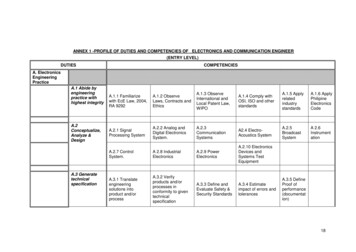

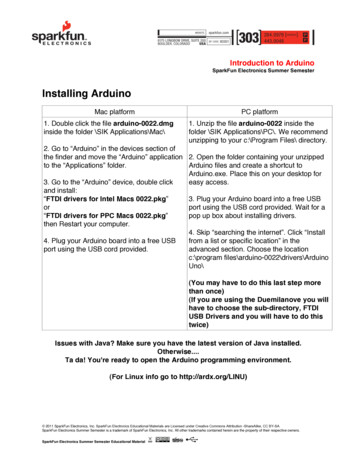
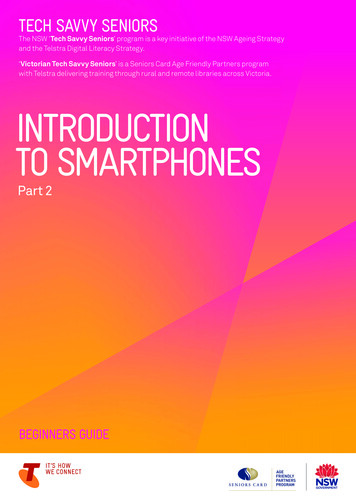
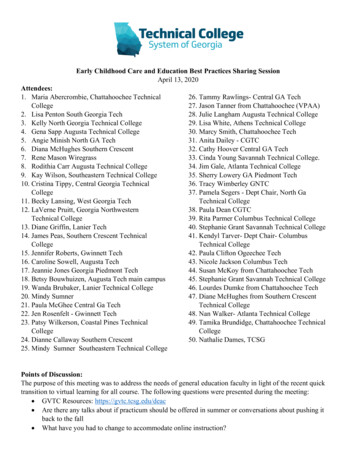

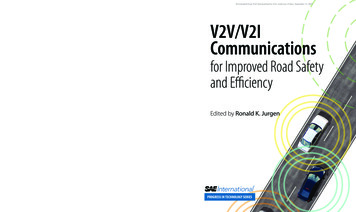
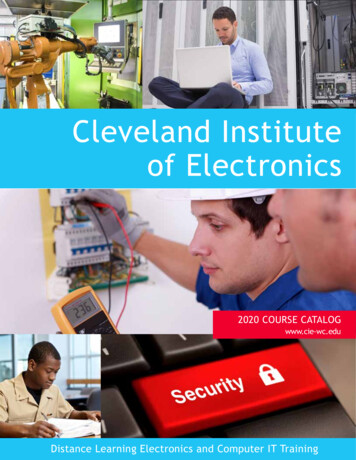

![History of Electronics electricity [Read-Only]](/img/18/history-20of-20electronics-20-20electricity.jpg)